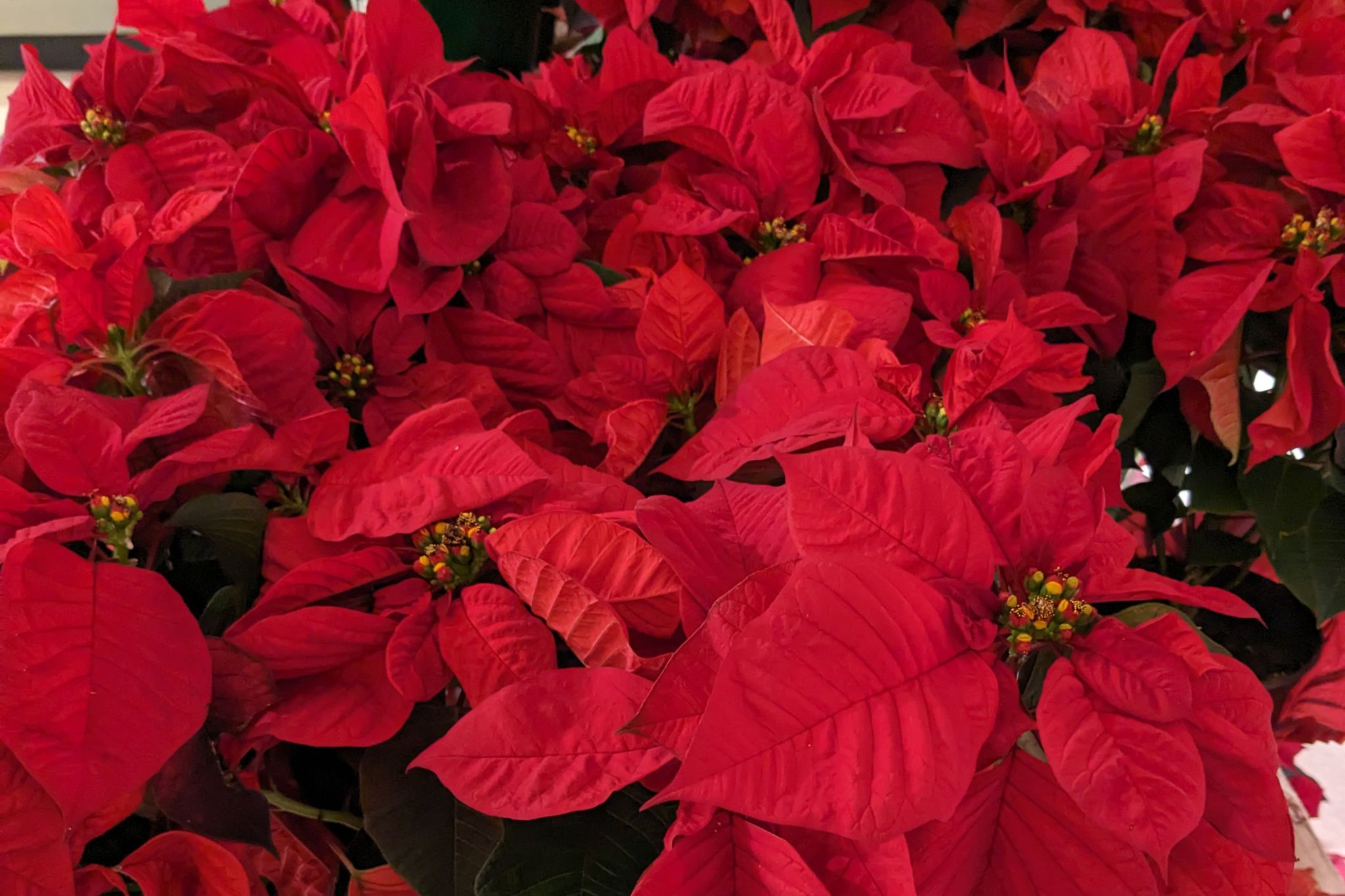Poinsettia is the brilliant Christmas plant that, with a little love, will bloom long after the ho-ho-hos have faded.
And if you want it to rebloom for next year, we've got tips for that, too (but fair warning: that's a lot harder to do).
In case you're worried your dog or cat could get sick after nibbling on a poinsettia, the APSCA says ingestion can irritate the mouth and stomach or even cause vomiting, but the danger is generally overrated.
Here's how to care for poinsettias during the season (and beyond):
First, Buy a Healthy Poinsettia
Inspect poinsettias carefully before you buy a plant and look for these features to find a healthy one:
- Dark green foliage before color develops.
- Bracts (colored leaves) completely colored without green perimeters.
- Lush and filled with leaves, not yellow and sparsely covered.
- Balanced from all sides.
- Displayed naked without plastic sleeves that can cause plants to droop. Cover the plant only when transporting in temperatures below 50 degrees.
- 2.5 times taller than its diameter.
Be Careful Taking It Home (Poinsettias Hate Cold)
Poinsettias originated in Mexico and don’t like the cold, even for a few minutes. So make sure you wrap the plant before driving it home. At home, keep it away from hot and cold air, such as from heating registers and drafty windows, which can make leaves drop.
Follow These 4 Tips to Care for Poinsettias at Home
1. Display your poinsettia in indirect light for about six hours per day.
2. High temperatures will shorten the poinsettia’s life. Keep room temperatures at 60 to 70 degrees during the day and about 55 degrees in the evening. You might have to move the plant around to expose it to optimal temperatures, like keeping it in the kitchen by day and in the mudroom by night.
3. Water when the soil is dry to the touch. If you keep the plant in foil, puncture the bottom to allow water to drain and prevent root rot. Empty drip trays after watering. Be careful not to overwater, which can cause wilting and leaf loss.
4. Feed blooming poinsettias every two to three weeks with a water-soluble plant food; water monthly after blooming.
Follow These Steps to Make It Rebloom
Coaxing a poinsettia to rebloom each year is an exhausting process. Each month from January to December you have to snip or repot it, move it to the dark or the light, and water or not water. You’ll get a migraine just thinking about it.
Since you can find a new six-inch poinsettia for as little as $10, you’re better off buying a new crop each year and spending your time and energy on other gardening delights.
But if you’re a waste-not person, here’s a look at what you can do to coax your poinsettia to bloom again next year.
January–May: Give your plant plenty of sun and enough water to stay moist, but not soggy. Fertilize every two weeks. In early April, prune height to six to eight inches.
June: Repot with fresh soil and move your poinsettia outdoors, where it can get six to eight hours of direct sunlight. Fertilize weekly until early fall. If you put the plant on a patio, give it shade during the hottest part of the day. If you place the pot in a flower garden, lift and turn it weekly so roots don’t grow into the ground and become shocked when you return the plant indoors in September.
Late July: Pinch off the top of the plant and two to three leaves on each stem to prevent the poinsettia from getting leggy.
September: Bring the poinsettia indoors when nighttime temperatures fall into the 50s. Place in a sunny window, and water when dry to the touch. Fertilize weekly.
Oct. 1 to Thanksgiving: To force the bracts to color, the plant must be kept in uninterrupted darkness from 5 p.m. to about 8 a.m., and returned to bright sun for the rest of the day. There should be a difference of seven to 10 degrees between the dark and light environments. Optimally, the temperature should be 65 to 70 degrees at night and 70 to 80 degrees in the day. Fertilize weekly.
Thanksgiving: When the bracts begin to color, suspend the dark-light routine, and keep the plant moist and in a sunny spot for six to eight hours daily. After full color has been achieved (congratulations!), stop fertilizing and move the poinsettia to wherever it will be admired most.
